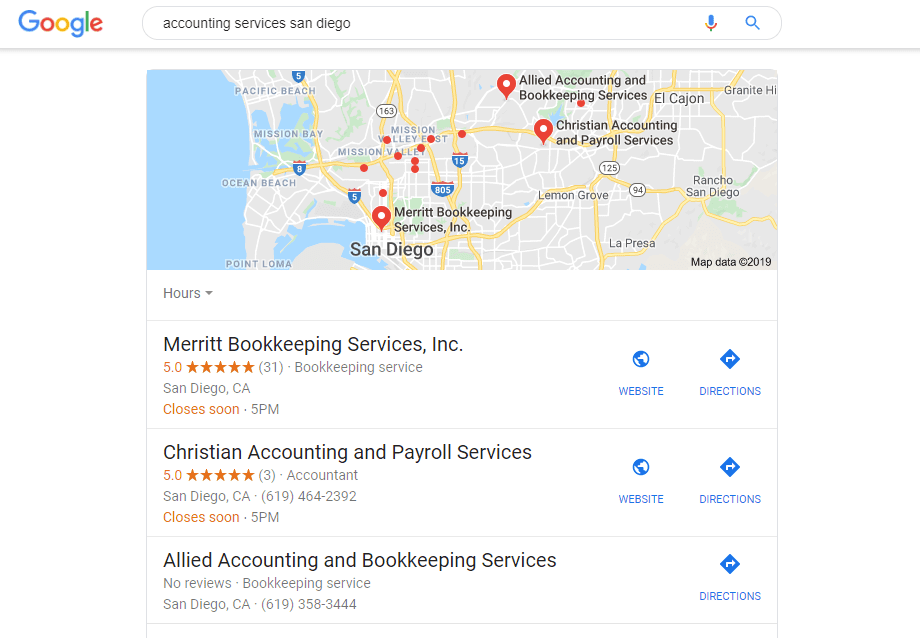You don’t need to be a developer to help your business rank well—it certainly doesn’t hurt to be one, but there’s a lot of things you can be doing right now, as a small business owner, to improve your website’s SEO.
SEO this, SEO that… what is SEO exactly? Let’s break it down.
SEO is short for search engine optimization. Websites with good SEO are easy for search engines to read, meaning that they rank higher on Google, Yahoo, Bing, and other search engines.
There are a few ways to improve, or “optimize,” your website for the search engines, and those are usually broken up into three different categories: on-page SEO, off-page SEO, and technical SEO.
Think of on- and off-page SEO as being on and off your website pages. Now let’s take a closer look at each category.
On-page SEO, AKA Content Optimization
On-page SEO covers anything you can do on the pages of your website, including:
- Optimizing your content
- Making sure your website architecture is easy to navigate
- Updating your website’s metadata, meta descriptions, alt text, titles
- Keyword research
- Including internal and/or external links
This type of SEO ensures that the search engines can read your website; it essentially lets Google know what your page is about.
On-page SEO is about 50 percent of what you should be focusing your efforts on.
On-Page SEO is also the easiest area of SEO to get wins in, when done right. And it’s more than just keyword researching.
Anything on your website is fair game, but the main considerations to keep in mind when working on improving your site’s performance are making sure your website is visible to search engines, is not blocking search engines, and has keywords that the search engines can pick up.
Is Your Website Visible to Search Engines?
Increasing website visibility in search engines is one of the biggest goals in SEO, as visibility can increase your site traffic, brand awareness, your leads, and your sales. Here are three factors that play into website visibility.
Clean URLs
The first thing to take a look at is the URLs on your website. Cleaned up URLs are friendly to both your users and the search engines.
A complicated URL, like:
https://www.websitename.com/services/294j/jfkfn39l3k-0i3rjf
Versus a clean, or simplified URL, like:
https://www.websitename.com/services/your-service-name
Complicated URLs are much more confusing to people and robots who visit or try to index your website.
If you take a look at Google’s first page of search results, you’ll see that those top 10 results have clean and readable URLs, like the simplified version above. It’s much easier to understand, right?
Website Navigation
The second thing to look at is your website navigation. Where is your menu located? How easy is it to access your website once landing on your homepage?
Websites that require their users to watch a video before they can access anything on the website are cool in theory but can be confusing to users, as well as difficult for search engines to crawl and access.
The industry standard for site navigation provides users and search engines the easiest path: people are used to seeing a menu across the top of a website or running along the left-hand side.
Content
Consistently posting valuable pieces of content lets the search engines know that your site is active and providing value. This helps the search engine crawlers know that they should be revisiting your website. And the more the search engines visit your website, the better it is for your organic search results.
Need help with content? Get some more tips on content development.
Are the Search Engines Blocked from Your Website?
Continuing with website visibility, there are a few different files on the backend of your website—usually built into your content management system CMS —that impact the way the website crawlers view your website. Your content management system, or CMS, is an application that’s used to manage content creation and modification. A few popular CMS systems include WordPress, Drupal, and Magento.
Sitemaps.xml
A sitemap is basically a big map that outlines all of the pages on your website. Usually built into CMS systems like WordPress, sitemaps make it easy for search engines to discover your website pages and index them. Search engines are automatically looking for your sitemap when they visit your website, meaning that you should double-check that you have a sitemap and that your sitemap is updated.
Robots.txt
The robots file sits in the same section of the backend of your website as your sitemap but has a different function. Robots were designed to tell Google the sections of your website that you don’t want to be indexed. Having a robots file is not as important as a sitemaps file—unless there are sections of your website you don’t want Google to visit, like if you have private data hosted on certain pages, or want to hide less valuable content.
If you’re noticing certain web pages that aren’t receiving traffic, or that you can’t find your site on Google, your robots file is a great place to start to check if your site has a noindex tag. If there is a noindex tag present, then that’s most likely the reason that your page isn’t receiving traffic as noindex tags are the tags that tell the search engines to exclude page(s) from search results.
Help the Search Engines Pick Up Your Keywords
Optimizing your content includes incorporating keywords into your website pages and blog. The easiest way to incorporate keywords into your content is to select a primary keyword to build your content around.
Good keyword researching is vital to a successful SEO project. Why? Because the wrong keywords can make your SEO efforts futile, and keywords that are too popular can make it difficult for small businesses to rank due to excess competition.
Our SEO Strategist’s Top Five Keyword Tools
Some of our favorite tools for discovering great keywords are:
Google AdWords Keyword Planner for discovering keywords and search volumes. To access Keyword Planner, your business must have an active AdWords campaigns running. We love the AdWords Keyword Planner, as it gets us keyword data directly from the source everyone cares about most—Google.
Four other alternatives to Google’s Keyword Planner, with free trials, include MOZ, SEMrush, KWfinder, and Ubersuggest.
For more tool suggestions from our SEO Strategist, check out the Tiny Desk Tour peek into our SEO Toolbox.
Off-Page SEO Matters
So, the first 50 percent of your non-technical efforts are On-Page SEO. The other 50 percent will be focused on Off-Page SEO. Off-page SEO includes techniques that affect the promotion of your website, rather than content that’s directly on your website. Most of off-page SEO revolves around promotion in posts on social media, the way that your website is linked on other sites, and guest posting.
The Basics of Backlinking and Link Building
Every time another website links to yours, your website gets points in the “value” column from Google. Think about it—if a page provides value, it will be linked to from other websites. There’s no best kind of link, however, links from websites that are considered authoritative, high-quality, and relevant to your subject matter and content are much stronger than links that were paid for on a random, unrelated website.
A good process for building links is to do so organically by creating content others in your field find valuable enough to share. For more assistance on where to start with linkbuilding, schedule a consultation with our SEO strategist.
The Value of Guest Posting
Guest posting is an effective way to garner quality, relevant links. Especially when your guest posts are well-written, researched, and cite sources. Quality is one of the most important components of guest posting.
A guest post is when you write and publish an article, or a blog post, on someone else’s website. To be useful for SEO, the website that’s hosting your article must include a link back to your site, somewhere in the post. Usually, the link is at the beginning or the end of the article.
Social Media and Its Impact on SEO
The way we link, share, and like content on the internet has transformed with the use of social media. Not only does social media help build social activity and increase overall SEO strength for small businesses, but it can also be used to create regular backlinks…that are easy and free to use.
Social media should be a part of every SEO project. A great way to incorporate social into your SEO strategy is to share links from your website onto your Facebook page, or your LinkedIn. There are other social media platforms that you can backlink to as well, depending on your industry, but Facebook and LinkedIn are our two most recommended social sites for clients that serve a B2B audience.
How does your social media strategy stack up? Check now.
Your Checklist for Easy Local SEO
Most people complete a search before visiting a business. For businesses targeting an audience in the local area, this means that your business must be visible so your audience can find you.
Working on local SEO helps businesses obtain a higher conversion rate, more brand visibility and awareness, and a higher return on investment. Basically, small businesses get a higher ROI from local searches.
Ranking high on local SEO creates more opportunities for small businesses because local search results for businesses show users business contact details directly on the Google search engine results page (SERP).

Here are five things you can do right now to make sure your business is optimized for local SEO:
- Create a business page on Google My Business
- Upload photos and videos to your Google My Business listing
- Build citations on local business directories by adding your name, address, and phone number to your Facebook business page, LinkedIn, Yelp, etc.
- Encourage your customers to leave reviews and share their experience at your business! Learn more about how Google Reviews can help you rank
- Make sure your business name and location are on your website…bonus points if you also add a google map of where you’re located
Working through this checklist will help you kickstart your local rankings and reach the 80 percent of consumers that use search engines to find local information.
Technical SEO
Technical SEO covers the action items website developers usually help with, like making sure your website is able to be crawled and indexed by the search engines. Technical SEO also helps small businesses create the ideal user experience for their audience by ensuring that their website functions properly, and that pages redirect and load within a reasonable amount of time. Remember earlier when we said you don’t have to be a developer to do SEO? Well, technical SEO is the exception—trust us.
Technical SEO includes the robots and sitemap issues noted above, and refers to changes made on your website and on your servers to improve the way that the search engine spiders crawl and index your website. As far as small business owners are concerned, implementing an SEO audit can aid in discovering if any technical adjustments need to be made by a developer. SEO audits are a great tool, as they generally look into competitor research, accessibility, link and keyword analysis, content evaluation, site structure, and more. If you’re curious about your current SEO standing, fill out our form below and we’ll send you a complimentary analysis.
Tools to Track Your Efforts
Are your SEO efforts paying off? Is there an area your target audience loves, compared to others?
Web analytics are a great way to track what’s been working for your business, and what hasn’t. They have completely changed the way companies do business in the digital age. Get insights into how your audience found your website, their interests, behaviors, and more.
Google Analytics is a web analytics tool that helps you understand your site traffic—and, unlike AdWords Keyword Planner, it’s free! Get insightful awareness on trends in your data, your website’s most visited pages, and monitor your business’ performance.
Another useful tool, especially for businesses whose goal is to get potential customers to call you for more information, is CallRail. CallRail gives you analytics and tracking for phone calls, search, and marketing campaigns.
Conclusion
There are a lot of factors that go into SEO, from how you use and interact on your social media, to the way your website is designed, how your website development is structured, and the quality and consistency of your content. And at this point, it may seem like every factor mentioned is important.
The way that consumers search and use the internet to find businesses has transformed the steps that small businesses must take to increase their visibility.

We can help you master your digital marketing strategy with CRO tips. Our team of strategists are experts at understanding you and your audience. Whether it’s setting up Google Analytics, or creating great landing pages, Wayward Kind is all about action. Ready to convert to a mindful marketing strategy? Contact us today!









